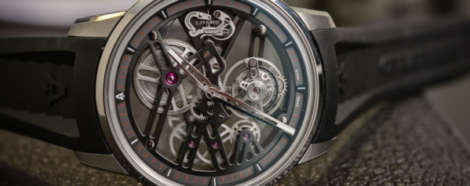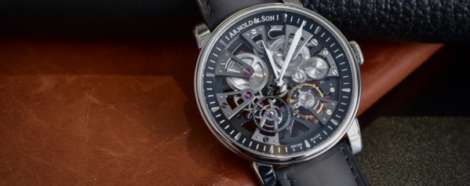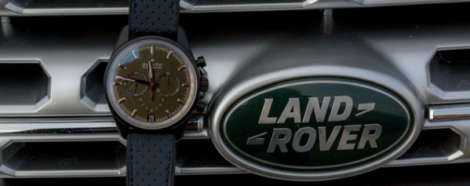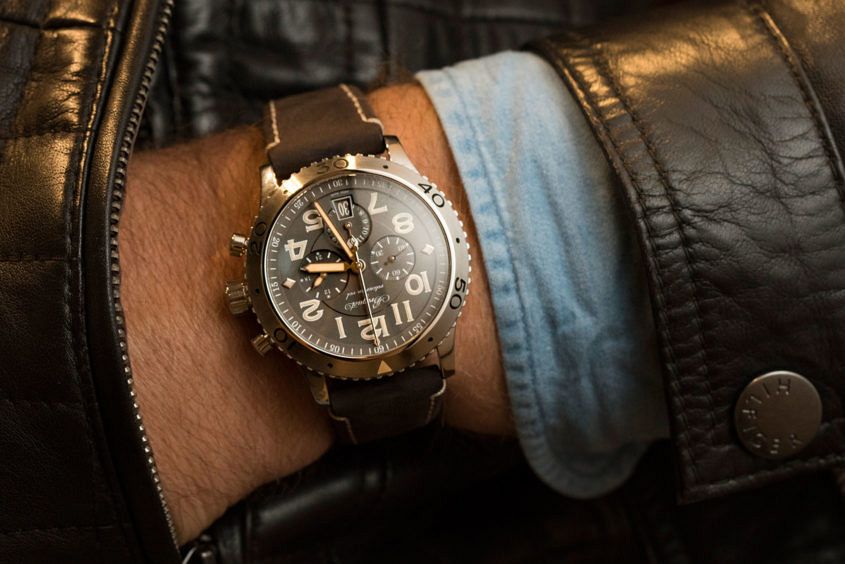IN-DEPTH: The Heritage Chronométrie Annual Calendar Chronograph proves that the secret to Montblanc’s success is complicated
 The story in a second: Montblanc’s 2016 Heritage Chronométrie highlight is a complicated number, packed with value. Jerome Lambert descended, whirlwind-like, on Montblanc in 2013. His presence was felt immediately, as the global luxury giant began turning out increasingly impressive timepieces, many with a complicated, heritage bent. Then, as suddenly as he had arrived he was gone, elevated to the rank of Richemont Group Head of Operations in a recent reshuffle. And while he may be running out the clock as Montblanc CEO (replaced by former Head of Sales Nicolas Baretzki), his short tenure will leave a long legacy – a revitalised brand, a serious watchmaker, releasing some of the most competitive, compelling pieces on the market. The Heritage Chronométrie Annual Calendar Chronograph is a prime example of that – bundling fan favourite complete calendar and chronograph complications into a classically styled package, all for under $15,000 in steel (there’s also a gold version). The dial One glance at the Annual Calendar Chronograph and it’s immediately clear that it’s a whole lot of watch. With four subdials, 10 hands and numbers everywhere, you’d be forgiven for taking a few seconds to orient yourself. Having said that, Montblanc has done a good job…
The story in a second: Montblanc’s 2016 Heritage Chronométrie highlight is a complicated number, packed with value. Jerome Lambert descended, whirlwind-like, on Montblanc in 2013. His presence was felt immediately, as the global luxury giant began turning out increasingly impressive timepieces, many with a complicated, heritage bent. Then, as suddenly as he had arrived he was gone, elevated to the rank of Richemont Group Head of Operations in a recent reshuffle. And while he may be running out the clock as Montblanc CEO (replaced by former Head of Sales Nicolas Baretzki), his short tenure will leave a long legacy – a revitalised brand, a serious watchmaker, releasing some of the most competitive, compelling pieces on the market. The Heritage Chronométrie Annual Calendar Chronograph is a prime example of that – bundling fan favourite complete calendar and chronograph complications into a classically styled package, all for under $15,000 in steel (there’s also a gold version). The dial One glance at the Annual Calendar Chronograph and it’s immediately clear that it’s a whole lot of watch. With four subdials, 10 hands and numbers everywhere, you’d be forgiven for taking a few seconds to orient yourself. Having said that, Montblanc has done a good job…
The post IN-DEPTH: The Heritage Chronométrie Annual Calendar Chronograph proves that the secret to Montblanc’s success is complicated appeared first on Time and Tide Watches.




 This cool, calm and collected new Yacht-Master almost slipped past me. I was too busy falling in love (again) with the gold and chocolate Rolesor Yacht-Master, which was distracting me and dazzling my senses, but then out of the corner of my eye I spotted a flash of almost-iridescent blue, and my curiosity was piqued. I’m so glad it was, because this steel and platinum Yacht-Master with its dark rhodium dial and blue highlights is an absolute stunner, even though it’s a much more restrained affair than its Everose-embellished siblings (in both Rolesor and Oysterflex variants). This is partly down to the dark dial, but it’s also the bi-directional platinum bezel, which might sound weird given the material, but with a predominantly sand-blasted finish, it’s actually far less in-your-face than ceramic. Not that it’s plain, by any stretch. The shimmering dial, polished bezel elements and centre bracelet links mean it pops where it counts, and the overall effect of metallic grey on metallic grey adds up to a truly luxurious watch on the wrist. Then there’s the blue. It’s funny how that single line of text and sweeping second hand – a comparatively small amount of real estate – can have such massive impact…
This cool, calm and collected new Yacht-Master almost slipped past me. I was too busy falling in love (again) with the gold and chocolate Rolesor Yacht-Master, which was distracting me and dazzling my senses, but then out of the corner of my eye I spotted a flash of almost-iridescent blue, and my curiosity was piqued. I’m so glad it was, because this steel and platinum Yacht-Master with its dark rhodium dial and blue highlights is an absolute stunner, even though it’s a much more restrained affair than its Everose-embellished siblings (in both Rolesor and Oysterflex variants). This is partly down to the dark dial, but it’s also the bi-directional platinum bezel, which might sound weird given the material, but with a predominantly sand-blasted finish, it’s actually far less in-your-face than ceramic. Not that it’s plain, by any stretch. The shimmering dial, polished bezel elements and centre bracelet links mean it pops where it counts, and the overall effect of metallic grey on metallic grey adds up to a truly luxurious watch on the wrist. Then there’s the blue. It’s funny how that single line of text and sweeping second hand – a comparatively small amount of real estate – can have such massive impact…


 Turns out that Breguet, not content with nailing the brief when it comes to dress watches and innovating left, right and centre are also quite the dab hand when it comes to pilot’s watches. And they’re no Johnny-come-latelies at the genre, either. In fact, in the early 20th century, Abraham Louis Breguet’s grandson – Louis Charles Breguet – made planes under the name of Breguet Aviation. There is no connection, however, between Louis Charles’ aeronautical business and the Type 20 chronograph that inspired the Type XXI 3817 that we’re looking at today. It’s important to note that Type 20 and 21 chronographs used by the French Air Force in the early ’50s were made by a variety of suppliers. A group of six brands produced them according to a set of minimum requirements covering off form and function, with key features being the flyback chronograph, rotating 12-hour bezel and some fairly rigorous accuracy requirements. Of those brands that made these (super stylish, it must be said) tool watches, Breguet’s examples are the most coveted by collectors today. In the ’90s, Breguet realised the potential of this design, releasing a civilian version – the Type XX – in 1995, with the larger Type XXI following in 2004. We’ve seen many variations on…
Turns out that Breguet, not content with nailing the brief when it comes to dress watches and innovating left, right and centre are also quite the dab hand when it comes to pilot’s watches. And they’re no Johnny-come-latelies at the genre, either. In fact, in the early 20th century, Abraham Louis Breguet’s grandson – Louis Charles Breguet – made planes under the name of Breguet Aviation. There is no connection, however, between Louis Charles’ aeronautical business and the Type 20 chronograph that inspired the Type XXI 3817 that we’re looking at today. It’s important to note that Type 20 and 21 chronographs used by the French Air Force in the early ’50s were made by a variety of suppliers. A group of six brands produced them according to a set of minimum requirements covering off form and function, with key features being the flyback chronograph, rotating 12-hour bezel and some fairly rigorous accuracy requirements. Of those brands that made these (super stylish, it must be said) tool watches, Breguet’s examples are the most coveted by collectors today. In the ’90s, Breguet realised the potential of this design, releasing a civilian version – the Type XX – in 1995, with the larger Type XXI following in 2004. We’ve seen many variations on…